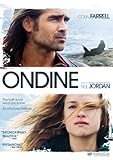from RocketHub:
05/08/13: Trailer with audio descriptions is here: http://tinyurl.com/cqb3pb7
Description
Welcome! We are excited to tell you about our documentary film and outreach project, INVITATION TO DANCE. We have worked longer and harder than we ever imagined, fueled by muenster cheese sandwiches and enthusiastic response from friends, film industry professionals, and activists, academics and artists from across the disability community. We’d be delighted to have you on board! Thank you.
Simi Linton and Christian von Tippelskirch
INVITATION TO DANCE
In 1971, Simi Linton was injured while hitchhiking to Washington to protest the war in Vietnam. Suddenly a young disabled college student, she confronted insidious forms of discrimination she couldn’t have imagined before. The film follows her story as, over time, she joins forces with a vibrant disability community and realizes that love, dance and activism can once again be central to her life. Simi introduces a lusty, fun-loving, cadre of activists who defy every conceivable disability stereotype. Their lives are filled with passion, struggle and humor. Their antic and defiant demonstrations for equity range from crawling up the steps of the U.S. Capitol Building by day to irreverent partying in a hotel ballroom by night. Ultimately, INVITATION TO DANCE is a never before told coming out story of disabled people claiming their rights to “equality, justice, and a place on the dance floor!”
WHY INVITATION TO DANCE?
For too long, disabled people have lived in the shadows – denied basic rights and freedoms. While there have been significant legal advances, profound discrimination and alienation continue to mark the lives of most disabled people. Change is on the horizon. Complacency isn’t an option. Our answer? A dynamic and innovative outreach project centered on INVITATION TO DANCE. The time is ripe to present a film that invites people into this world; that charts a way forward. There are role models galore – if we follow their lead, integration is inevitable.
We have created an engaging and beautiful film that speaks to a broad range of people. INVITATION TO DANCE opens doors and minds, sparks dialogue, and generates community involvement.
CALL TO ACTION
Invitation to Dance is in the final stages of post-production. We are preparing to bring it to film festivals, broadcasters, colleges and universities, cultural centers, community organizations, veterans centers and more. In order to do this, we need to raise $30,000 for:
– Sound edit and final sound mix
– Color correction
– Rights to archival footage
– Full access features, including audio description and captioning
– Producing final DVD
We’ve taken the project as far as we can on our own, and now we need YOU. Please help us reach (and even surpass!) our goal of $30,000 by making a contribution. Please spread the word – take a stand with us for equality, justice, and a place on the dance floor! Together, we can do this. Use your personal networks: send word out to your circles, engage people. Let them know why the message of INVITATION TO DANCE is timely, urgent and important.
Post it, tweet it, like it, caffeinate it!
Thank you,
Simi and Christian
Invitation to Dance is a sponsored project of Artspire, a non-profit arts service organization. Contributions for the purposes of Invitation to Dance must be made payable to Artspire and are tax-deductible to the extent permitted by law.


